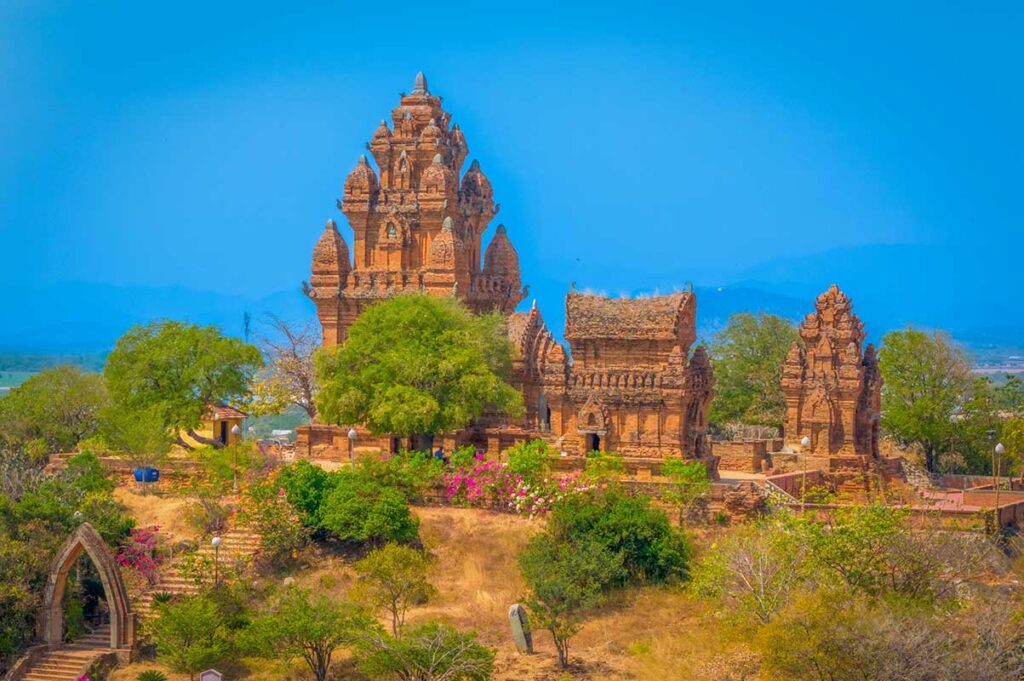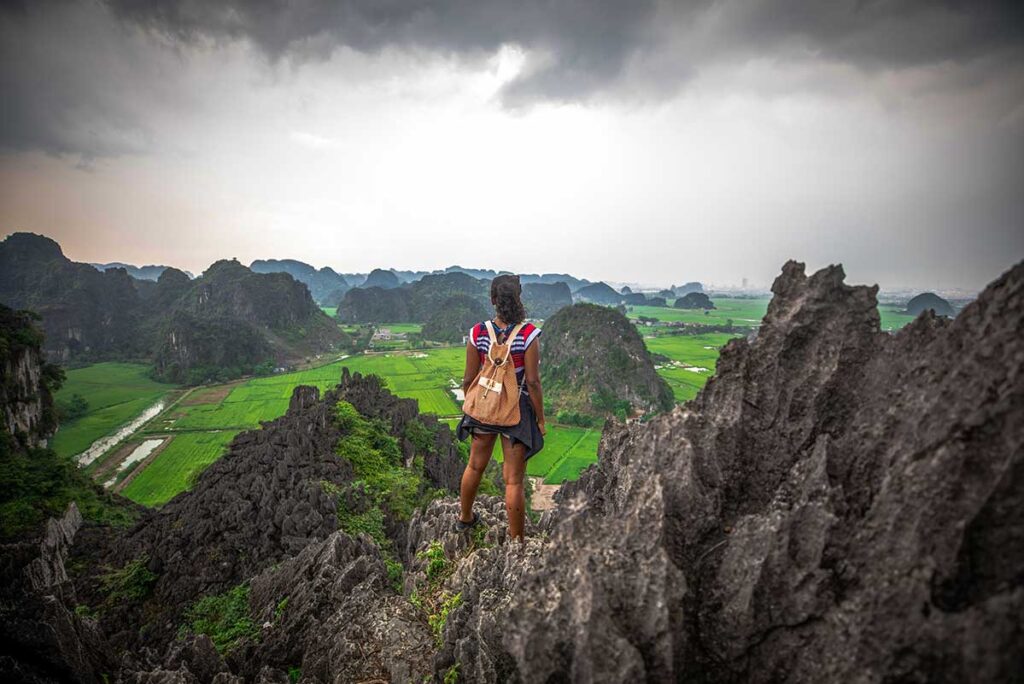What is the Po Klong Garai Tower?
Po Klong Garai Tower is a Cham temple complex located on Trau Hill, just outside the city of Phan Rang in south-central Vietnam. Built from red bricks and standing on a hilltop with wide views over the plains and vineyards below, it is one of the best-preserved examples of Cham architecture still standing today.
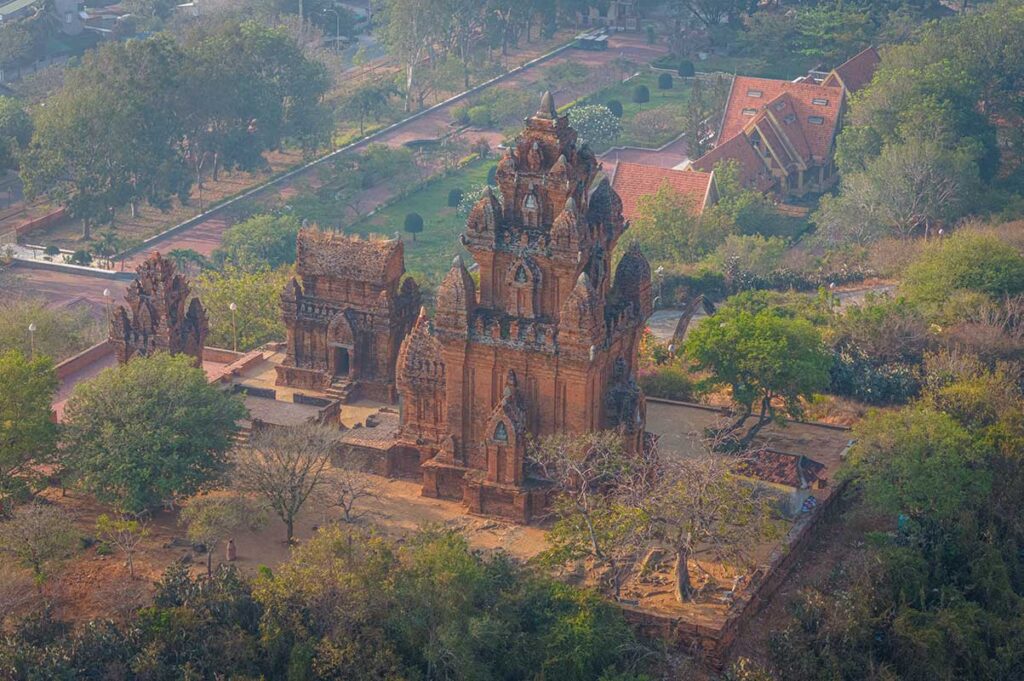

For the Cham community, the site is more than a historic monument – it remains a living symbol of cultural identity and a place of worship, especially during annual festivals like Kate. Visitors will find a mix of history and spirituality, with ceremonies still taking place in the main tower.
The location makes it a peaceful spot to look over Phan Rang and the surrounding countryside. While it does attract tour buses and local visitors, it is not as heavily visited as other Cham sites like My Son or Po Nagar in Nha Trang, so the experience usually feels more balanced between tourism and authentic cultural use.
History of the Cham Tower in Phan Rang
The Cham Empire and the construction of the tower
The Cham people ruled much of central and southern Vietnam for over a thousand years, building Hindu temples and shaping the region’s trade and culture. By the late 13th century, Champa was in decline, yet it was during this period that the Po Klong Garai complex was built under King Jaya Simhavarman III. Dedicated to King Po Klong Garai, who had ruled earlier in Panduranga, the towers honored both his resistance against invaders and his practical contributions such as irrigation works that supported farming in this dry province.
Legends, worship, and later recognition
Cham legends tell of King Po Klong Garai defeating Khmer challengers in a peaceful tower-building contest rather than through war. After his death, he was worshipped as a protector spirit, and the towers became an active place of worship.
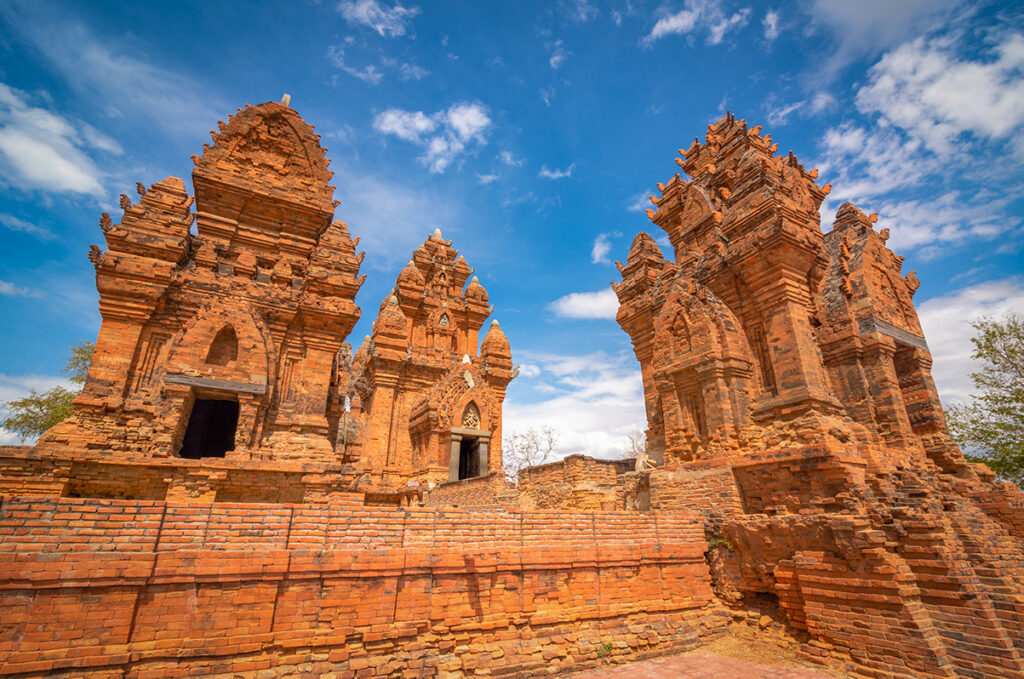
Unlike many ancient sites in Vietnam, this one was never fully abandoned: Cham communities continue to celebrate major rituals here, most notably the Kate Festival each autumn. Today the complex is not only a living religious site but also recognized as a Special National Heritage monument.
Things to See at Po Klong Garai Tower
The complex is small and can be explored in under an hour, but each tower has its own function and architectural details. Beyond the towers themselves, the site offers views over the surrounding countryside and a small museum that helps put Cham culture into context.
1. Main Tower (Kalan)
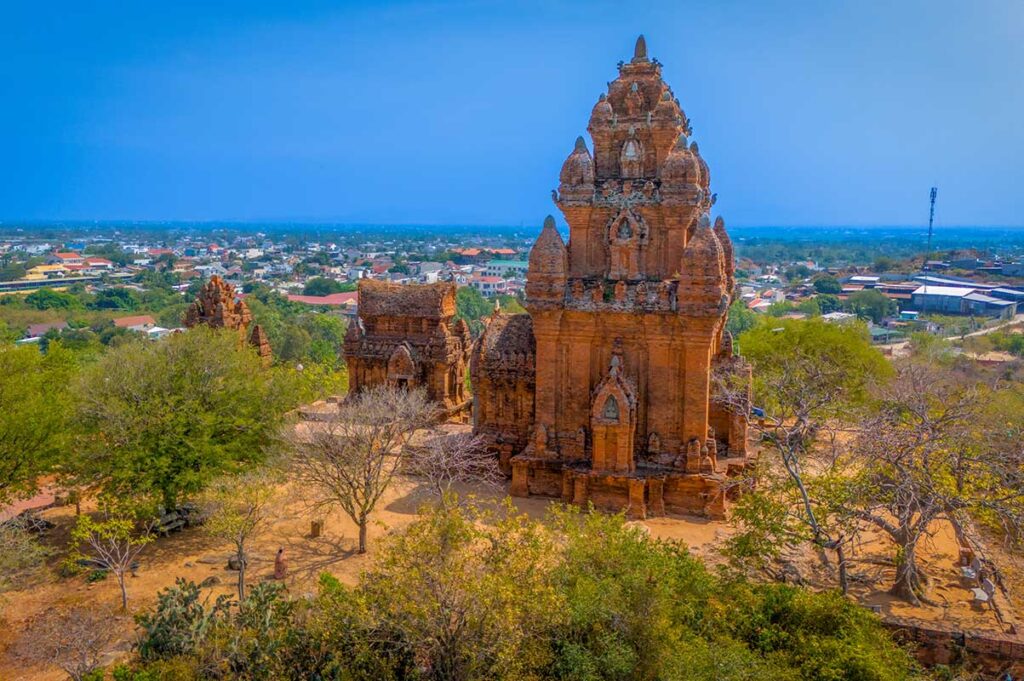
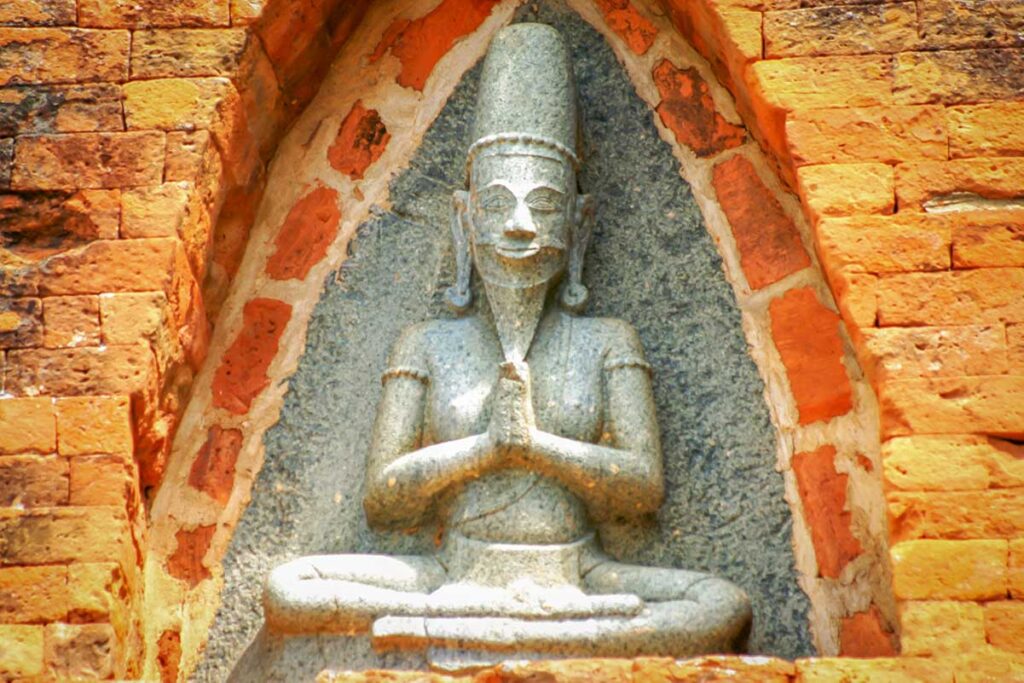
The main sanctuary rises more than 20 meters, with a multi-tiered red-brick design typical of Cham architecture. Its entrance is decorated with carvings of Shiva, while stone inscriptions in Cham script mark the doorway. Inside stands a statue of King Po Klong Garai, still an object of worship today. The Nandin bull, a Hindu symbol of prosperity, also appears in the sanctuary, linking the temple to its agricultural roots.
2. Gate Tower (Gopura)

Standing around 10 meters tall, the Gate Tower once served as the ceremonial entrance. Processions and rituals would pass through here before reaching the main sanctuary. Today it is often the first structure visitors see, and it provides a good vantage point to look back toward the main tower.
3. Fire Tower (Kosaghra)
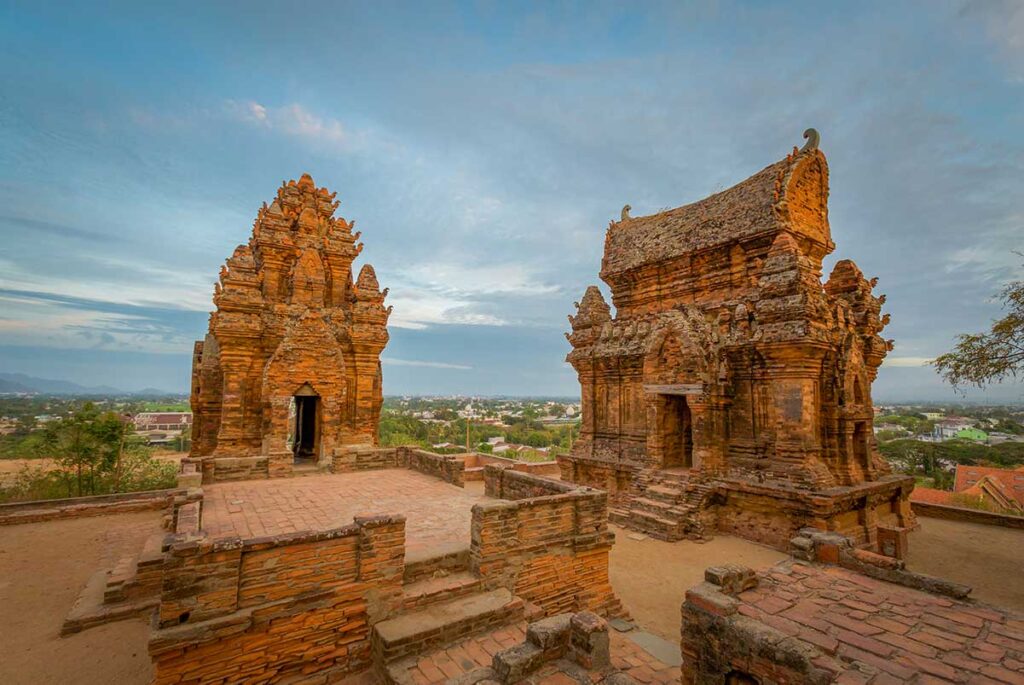
Located to the south, the Fire Tower is smaller but easily recognized by its saddle-shaped roof, said to resemble the communal houses of the Central Highlands. In the past, it was used to store ritual objects and offerings. Its distinct design makes it stand out from the otherwise uniform red-brick architecture.
4. Cham Ethnic Museum
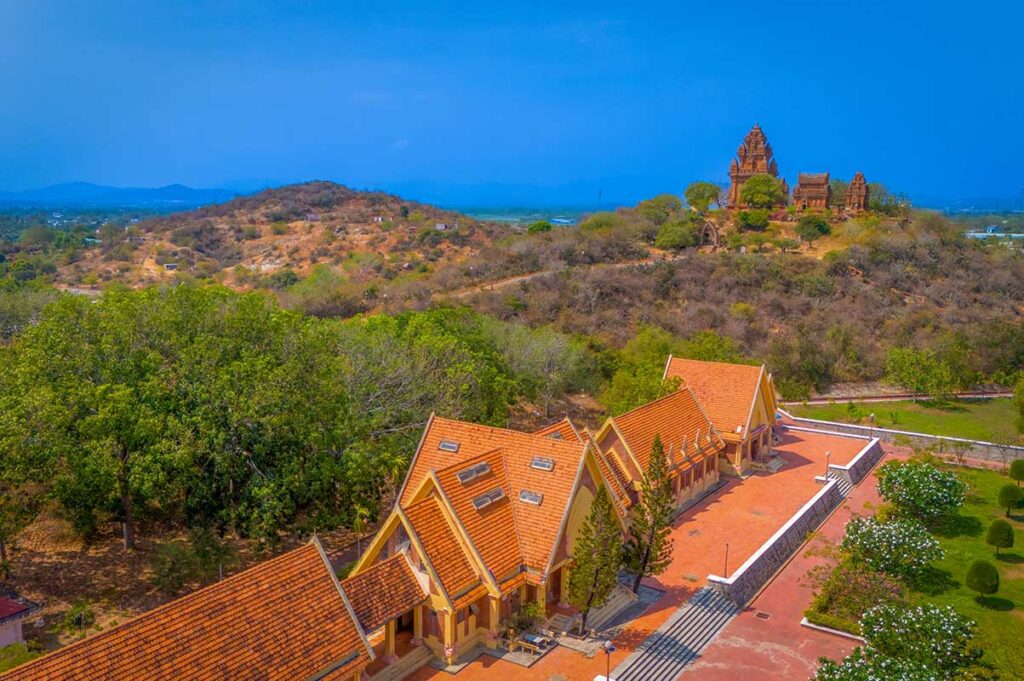

Near the entrance to the complex is a small museum displaying artifacts of Cham culture. Costumes, tools, and musical instruments give a glimpse into everyday life and spiritual practices. While not extensive, it adds useful context before or after visiting the towers.
5. Scenic views
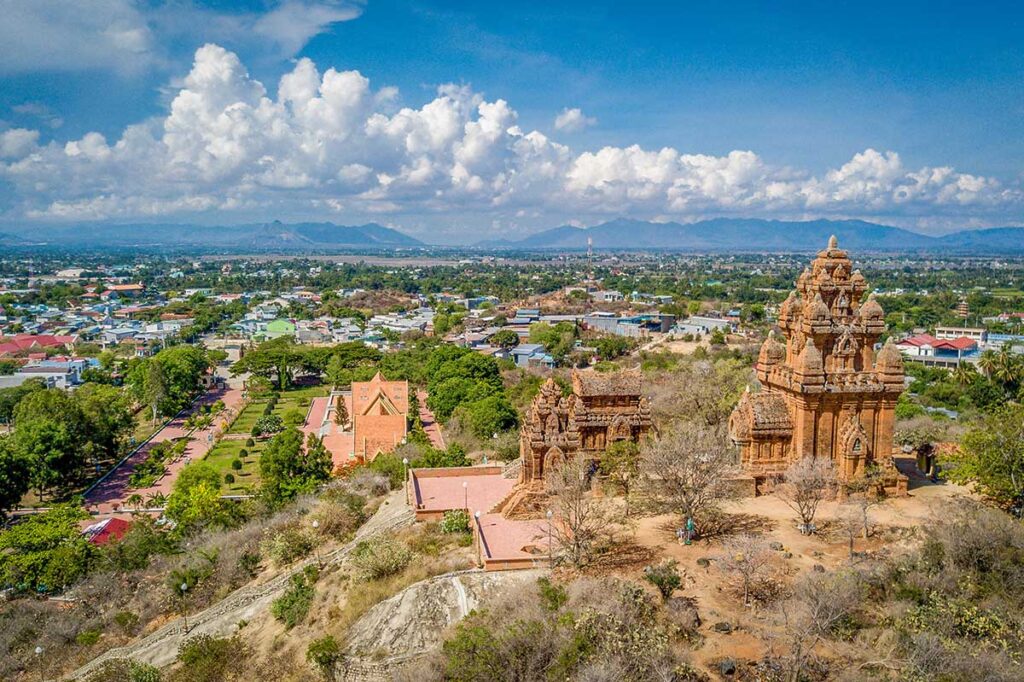
From Trau Hill, the towers overlook the plains of Phan Rang, dotted with fields, vineyards, and distant hills. The views are especially atmospheric at sunrise or late afternoon, when the red bricks catch the light. Many visitors linger here not only for the architecture but also for the chance to take in the landscape.
Location & Getting there
Where is Po Klong Garai Tower?
The tower complex sits on Trau Hill, around 7–9 kilometers west of Phan Rang City in Ninh Thuan Province. Its hilltop position makes it easy to spot from the surrounding area, and the approach road leads directly to the entrance.
Best base city
The best place to base yourself is Phan Rang–Thap Cham, the provincial capital. The city is a convenient transport hub with train connections, bus routes, and a range of hotels and guesthouses. From here, the towers can be visited in less than 20 minutes.
Driving motorbike
Many travelers choose to rent a motorbike to reach the site. The ride is short, scenic, and flexible if you want to combine it with other local sights such as vineyards or pottery villages. Officially, you’ll need a valid motorbike license with an International Driving Permit to be covered by insurance. Road conditions are straightforward, though summer heat can make the ride tiring.
Taxi or ride-hailing app
A taxi or ride-hailing car is the quickest and easiest way to get to the towers from Phan Rang. The ride takes about 15 minutes and is inexpensive, making it a good choice if you prefer not to drive yourself.
Renting a car with driver
If you plan to explore beyond the towers, renting a car with a driver for the day is the most practical option. This way you can combine Po Klong Garai with nearby attractions such as Bau Truc pottery village, local vineyards, or the beaches around Phan Rang, without worrying about logistics.
Practical visiting information & Travel tips
Entrance fees & opening hours
Tickets cost around 20,000 VND for adults and 10,000 VND for children. The site is generally open from 6:00 am to 6:00 pm.
How much time do you need?
Most visitors spend about one to two hours exploring the towers, museum, and viewpoints. A longer stay may be worthwhile if you come during a festival or want extra time for photography.
Best time to visit
Early morning or late afternoon is the most pleasant time to come. The light makes the red-brick towers more photogenic, and temperatures on the hill are cooler. Midday can be uncomfortably hot, especially in summer.
Festivals & events
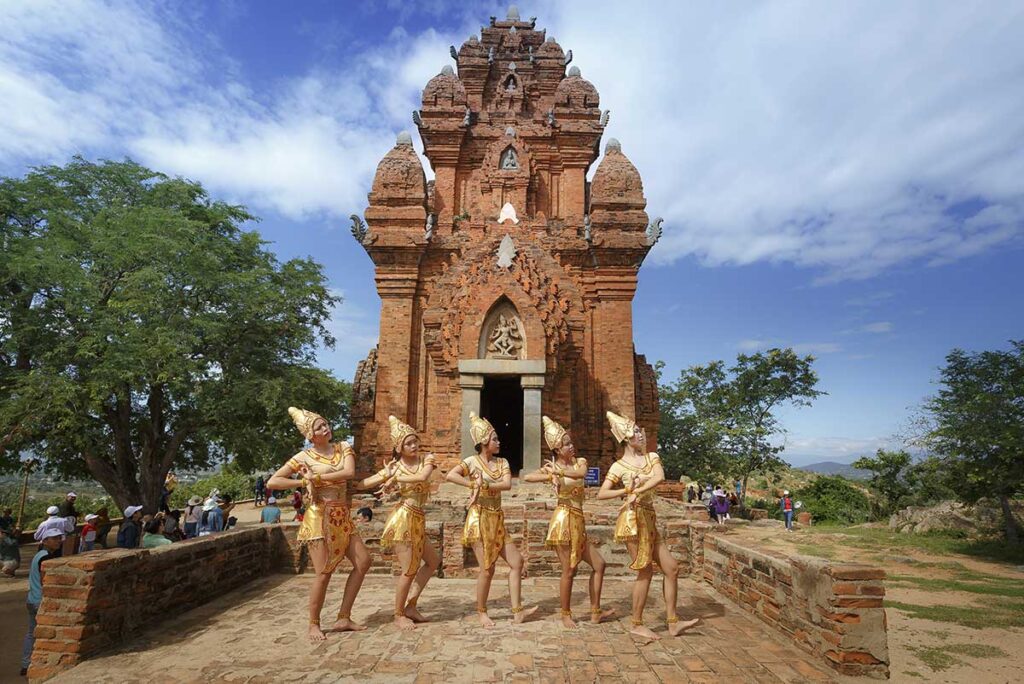
The towers are still used for Cham religious festivals. The most important is the Kate Festival (September or October, depending on the lunar calendar), when thousands of Cham gather for rituals, music, and dance. Smaller ceremonies include rain prayers and the ritual “opening of the tower door.” These events give a vibrant cultural experience but also mean large crowds.
Etiquette & respect
This is an active place of worship. Visitors are expected to dress modestly, avoid loud behavior, and not climb the towers. Photography is generally fine, but it’s best to be discreet during ceremonies.
Facilities
Facilities are limited. There is a small museum near the entrance, a ticket booth, and a few souvenir stalls selling Cham textiles and crafts. There’s little shade, so bringing water, sun protection, and a hat is recommended.
Accessibility
The site sits on a hill, so some uphill walking is required. You can take stairs or a paved path, and there’s also an optional electric cart (for a small fee) that reduces the walk but doesn’t eliminate it entirely.
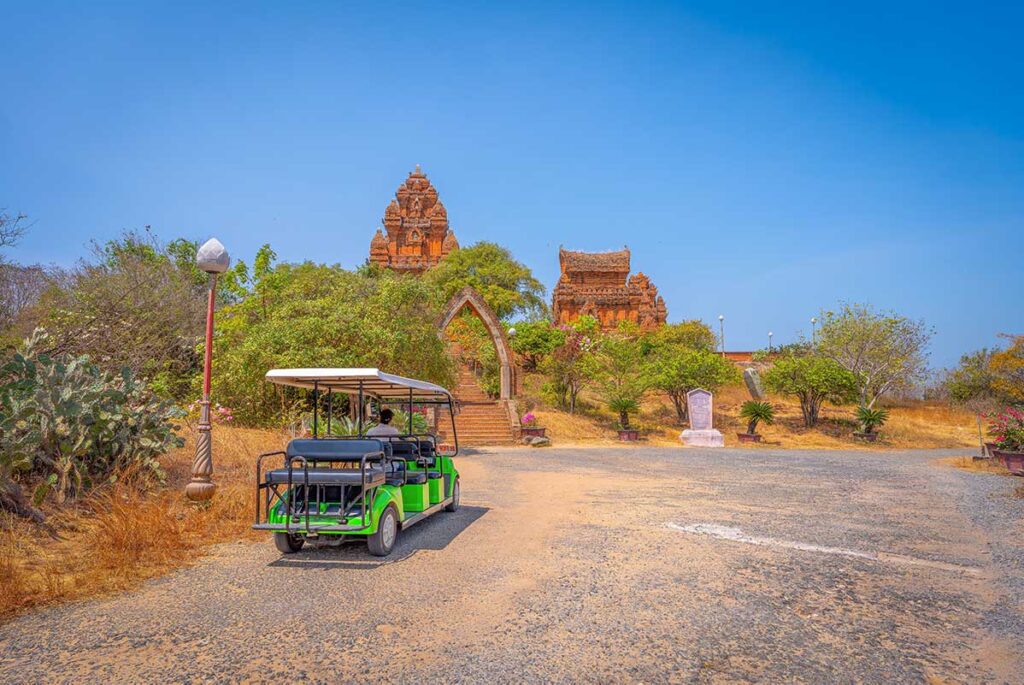
Is Po Klong Garai Tower worth visiting?
Po Klong Garai Tower is worth visiting if you’re interested in Cham history, local culture, and hilltop views over Phan Rang. The towers are well preserved, still in use for ceremonies, and give a rare chance to see Cham traditions alive today, especially during the Kate Festival.
On the other hand, don’t expect vast ruins or a polished tourist experience. The site is compact, facilities are basic, and outside of festivals the visit is relatively short. It works best when combined with other nearby attractions such as Phan Rang’s beaches, vineyards, or Bau Truc pottery village.
If Cham heritage interests you, also see our list of the best Cham remains in Vietnam for more sites worth exploring.
